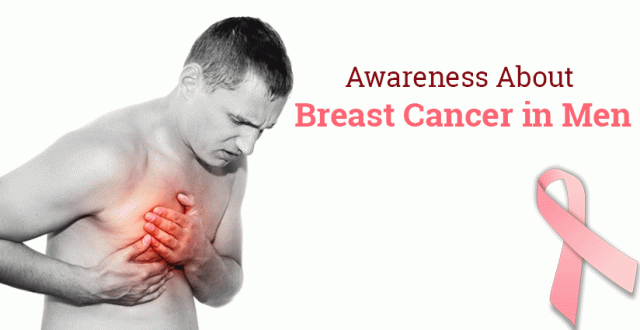Breast cancer in Men
Despite the fact that men don’t have breast like ladies, they do have a little measure of bosom/ breast tissue. The “breast” of a grown-up man is like the breast of a young lady before adolescence. In young ladies, this tissue develops and grows, yet in men, it doesn’t.
But since it is still breast tissue, men can get breast cancer. Men get the same sorts of breast tumors as women do, however malignancies including the parts that make and store milk are uncommon. Much awareness ought to be sensitized all across the globe in order to keep individuals at bay from this lethal disease.
What is breast cancer in men?
A breast growth is a dangerous tumor that begins from cells of the breast. A harmful tumor is a gathering of disease cells that might develop into (attack) encompassing tissues or spread (metastasize) to far off ranges of the body. Cells in almost any part of the body can get to be tumor, and can spread to different territories of the body. To take in more about how malignancies begin and spread. Bosom growth happens mostly in ladies, yet men can get it, as well. Numerous individuals don’t understand that men have bosom tissue and that they can create breast tumor.
Signs and symptoms of breast cancer in men
Men need to realize that breast cancer is not restricted to just ladies. Conceivable side effects of breast cancer to look for incorporate:
- A lump or swelling, which is usually (but not always) painless
- Skin dimpling or puckering
- Nipple retraction (turning inward)
- Redness or scaling of the nipple or breast skin
- Discharge from the nipple
Kinds of breast growth in men
Breast growth can be isolated into a few sorts taking into account the way the disease cells look under the magnifying lens. At times a solitary breast tumor can be a blend of these sorts or be a blend of obtrusive and in situ disease. What’s more, in some rarer sorts of bosom malignancy, the growth cells may not frame a tumor by any means.
Bosom growth can likewise be characterized in light of proteins on or in the malignancy cells, into gatherings such as hormone receptor-positive and triple-negative. These are examined in the area “How is breast growth in men arranged?”
-Ductal Carcinoma In Situ (DCIS)
Ductal carcinoma in situ (DCIS; otherwise called intraductal carcinoma) is considered non-intrusive or pre-obtrusive breast disease. In DCIS (otherwise called intraductal carcinoma), cells that coated the channels have changed to look like growth cells. The contrast in the middle of DCIS and obtrusive tumor is that the cells have not spread (attacked) through the dividers of the pipes into the encompassing tissue of the breast (or spread outside the breast). DCIS is viewed as a pre-growth since a few cases can go ahead to wind up obtrusive diseases. At this moment, however, there is no great approach to know for certain which cases will go ahead to wind up obtrusive tumors and which ones won’t. DCIS represents around 1 in 10 instances of breast growth in men. It is quite often treatable with surgery.
-Penetrating (or intrusive) Ductal Carcinoma (IDC)
Intrusive (or penetrating) ductal carcinoma (IDC) begins in a milk pipe of the bosom, gets through the mass of the channel, and develops into the greasy tissue of the bosom. As of right now, it might have the capacity to spread (metastasize) to different parts of the body through the lymphatic framework and circulation system. No less than 8 out of 10 male bosom malignancies are IDCs (alone or blended with different sorts of intrusive or in situ bosom tumor). Since the male bosom is much littler than the female bosom, all male bosom tumors begin moderately near the areola, so they will probably spread to the areola. This is unique in relation to Paget infection as portrayed beneath.
-Invading (or obtrusive) Iobular Carcinoma (ILC)
This kind of breast growth begins in the bosom lobules (accumulations of cells that, in ladies, produce breast drain) and develops into the greasy tissue of the breast. ILC is extremely uncommon in men, representing just around 2% of male bosom growths. This is on the grounds that men don’t more often than not have much lobular tissue.
-Paget Illness of the Areola
This kind of breast cancer/ tumor begins in the breast channels and spreads to the areola. It might likewise spread to the areola (the dim circle around the areola). The skin of the areola normally seems crusted, flaky, and red, with regions of tingling, overflowing, blazing, or dying. There might likewise be a fundamental protuberance in the bosom. Paget infection might be connected with DCIS or with penetrating ductal carcinoma. It represents around 1% of female bosom diseases and a higher rate of male bosom malignancies.
-Incendiary Breast Cancer
Incendiary breast cancer is a forceful, yet uncommon sort of bosom disease. It makes the bosom swollen, red, warm and delicate instead of shaping a knot. It can be confused for a disease of the bosom. This is extremely uncommon in men. This growth is talked about in point of interest in our report Inflammatory Breast Cancer.
Therefore, take due care of your near and dear ones.






























































